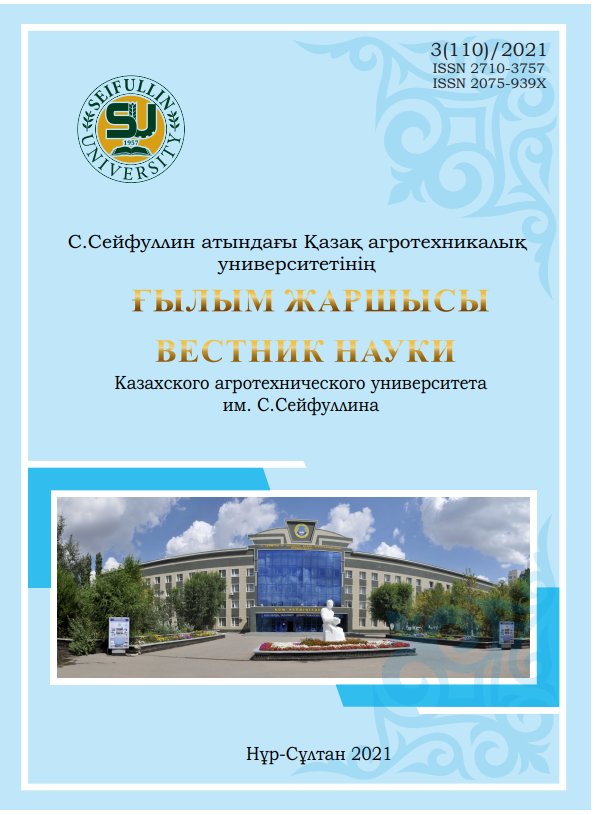QUALITATIVE INDICATORS OF OILY FLAX VARIETIES OF THE CHINESE BREEDING IN THE CONDITIONS OF THE DRY STEPPE ZONE OF NORTHERN KAZAKHSTAN
DOI:
https://doi.org/10.51452/kazatu.2021.3(110).733Keywords:
fodder crops, grass mixtures, yield, green mass, dry matter, productivity, nutritional valueAbstract
This article presents the results of the first year of research, studying the productivity and nutritional value of forage grasses and grass mixtures in the conveyor system in the dry steppe zone of Northern Kazakhstan. The research was carried out in 2020 in the fields of "Zerenda Pedigree Farm" LLP, the soil of which is dark chestnut, heavy in texture. The meteorological conditions during the period of the experiments did not correspond to the biological needs of forage grasses, in view of the high aridity and high air temperature in the summer months. However, the presence of soil moisture in the month of July had a positive effect on the development of crops, and contributed to the achievement of the tasks set. The purpose of the research is to carry out a comparative assessment of the productivity and nutritional value of grass mixtures with clean sowing of forage crops, providing a stable increase in yield and quality of forage in the dry steppe zone, for year-round provision of full-value forage for small cattle. The experiment included perennial and annual forage crops, and their mixtures. The assessment of crops was carried out according to phenological observations, chemical composition, dynamics of plant growth, yield, productivity and nutritional value of various types of feed. The minimum growing season was observed in biennial forage grasses - 49 days, the longest growing season - in paiza, 116 days. The maximum height among annual plants was noted for the Sudanese grass, reaching 160.2 cm before harvesting, with a lag of 47 and 64.3 cm, the next in height were fodder millet and African millet, respectively. In terms of the productivity and nutritional value of hay, one can note among annual grasses sowings of triticale and African millet - 8.74 and 8.59 MJ/kg, among biennial sweet clover Volga - 8.17 MJ/kg, and grass mixtures - peas + oats and peas + Sudanese grass, 8.14 and 8.32 MJ/kg, respectively. In view of the practical interest of agricultural producers in the development of a highly productive raw material conveyor for year-round provision of full-fledged animal feed, these studies are relevant and require continuation for the accuracy of the experiment.

